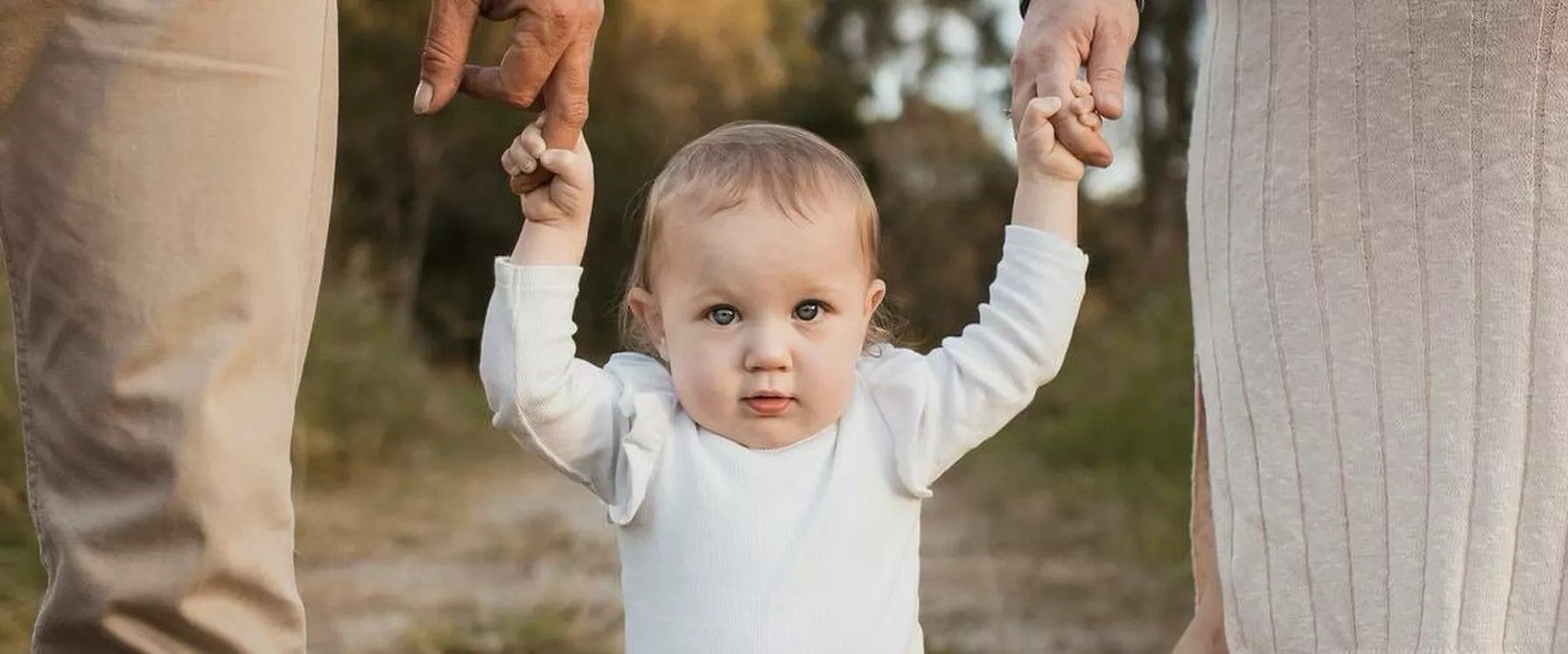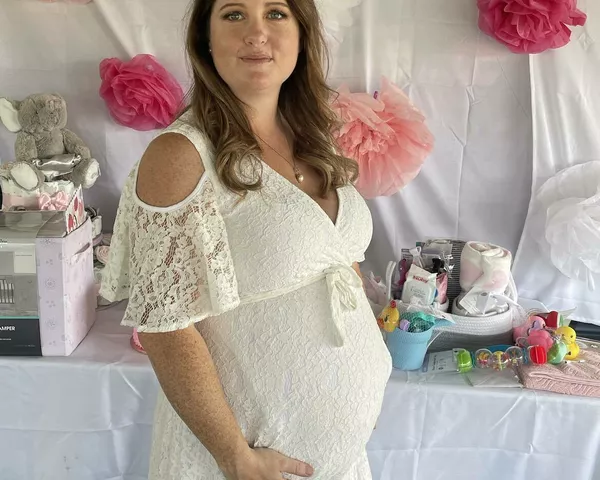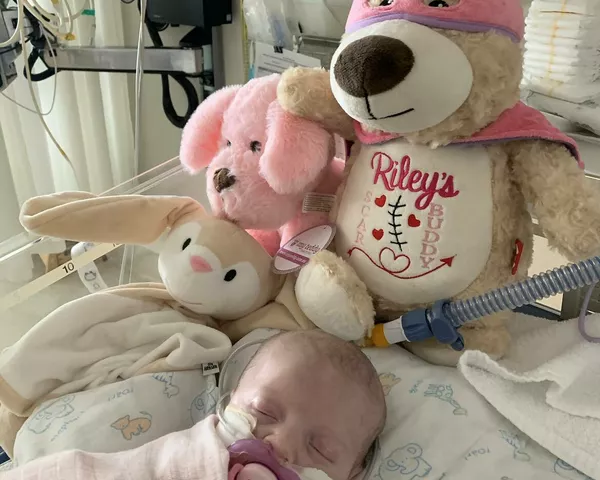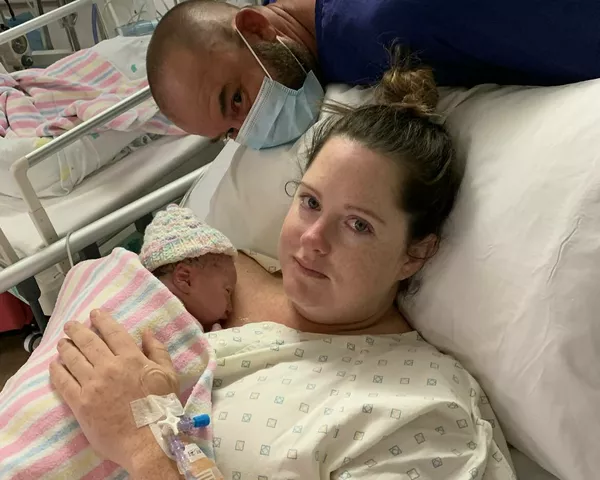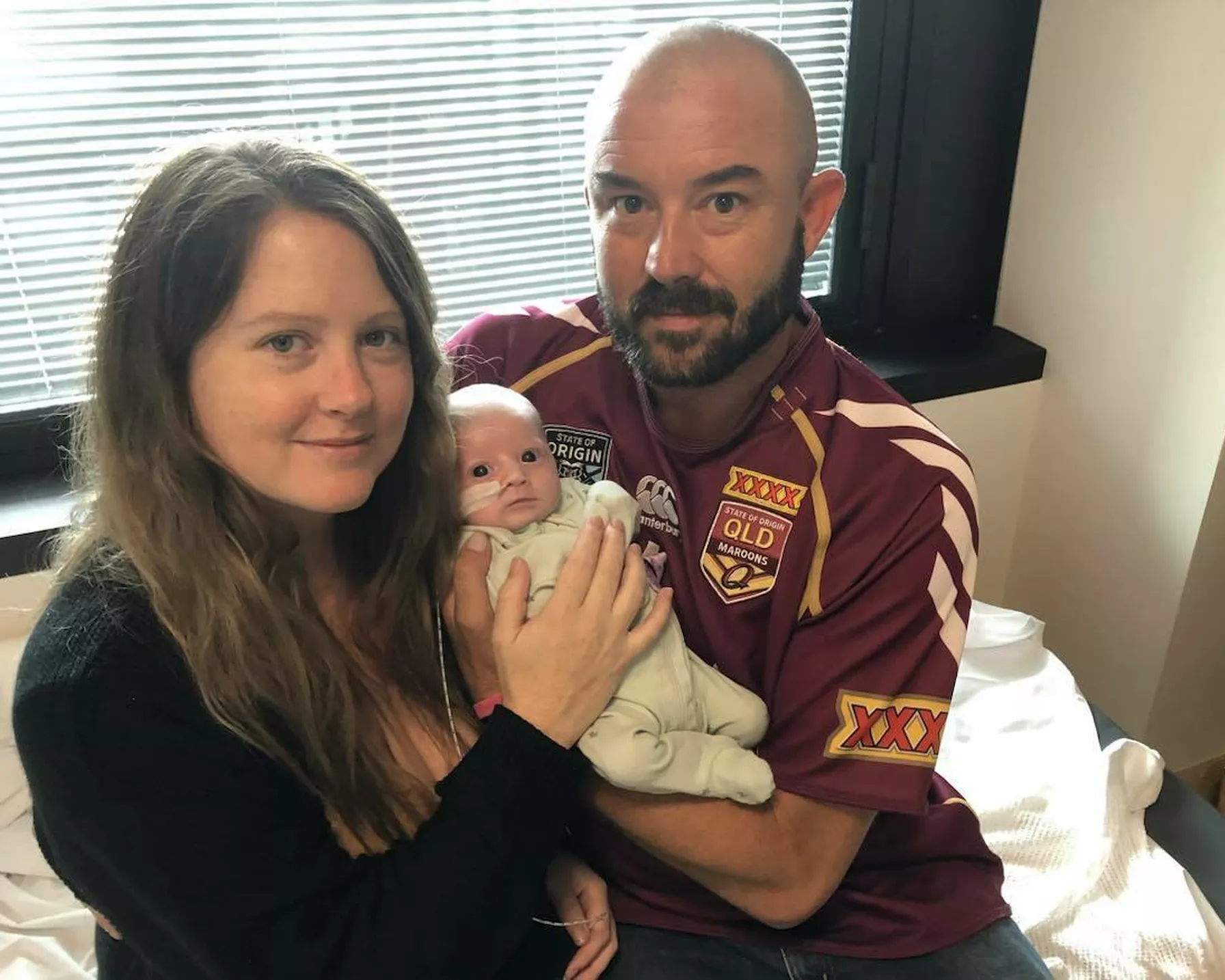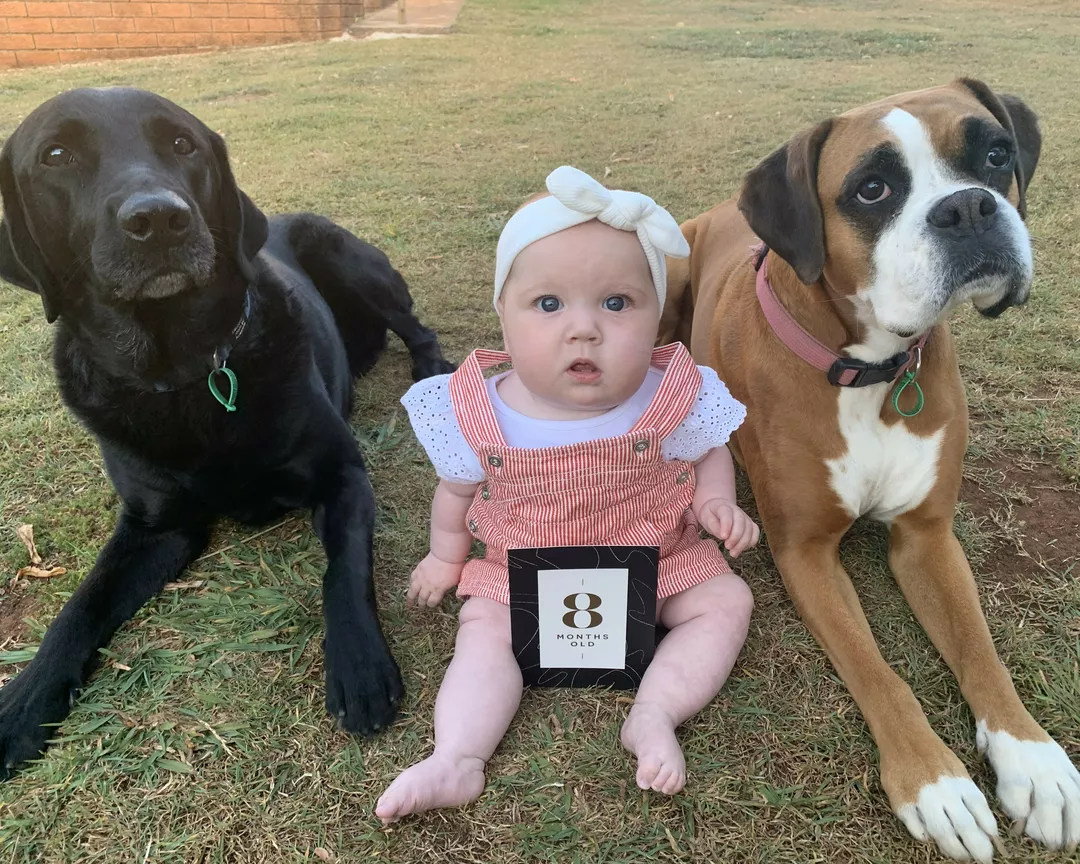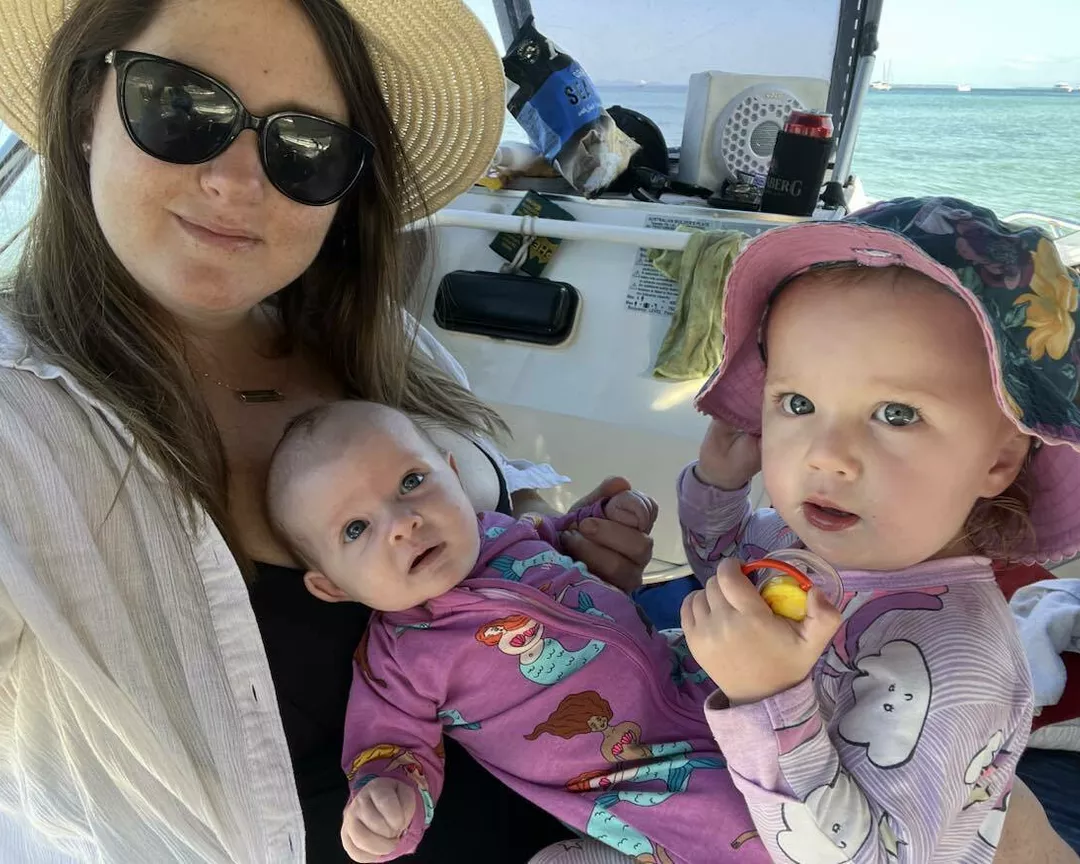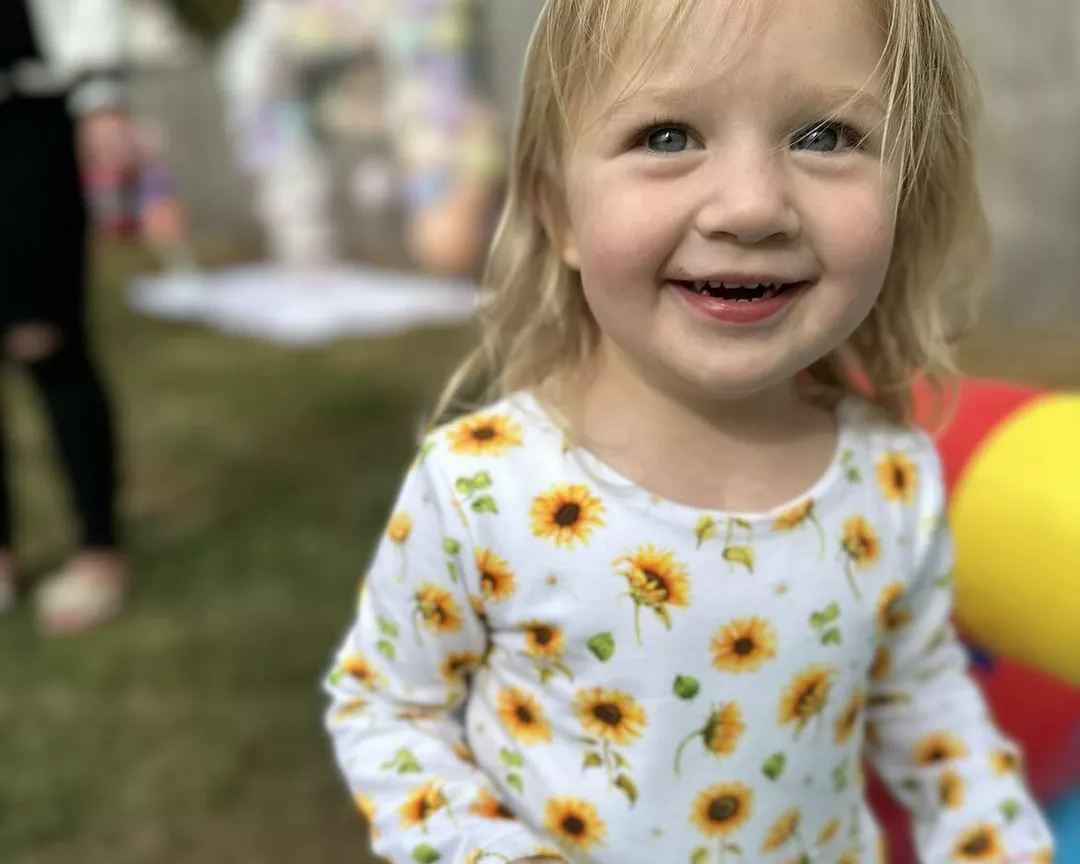
After trying to conceive for seven years, Samara was devastated to discover her baby had several heart defects at the 20-week scan. Riley had her first open heart surgery two weeks after she was born, and at nine weeks, she suffered a cardiac arrest. This is her story.
Diagnosing the baby’s rare congenital heart disease
After seven years of IVF and two miscarriages, Samara Green and her husband Jeff were thrilled to finally fall pregnant with their little miracle baby, Riley.
But then, at her 20-week scan, the Queensland mum was shocked when doctors found a raft of serious heart defects.
"They called me into the office afterward and told me there were some anomalies with Riley's heart," Samara said. "I was scared and alone. I called my husband in tears."
After being referred to a larger hospital and undergoing more scans, the expectant mum was told her baby had a condition called dextrocardia, a rare type of congenital heart disease (CHD) where the heart sits in the right side of the chest, instead of the left.
“Her heart wasn’t where it was supposed to be. Apparently, it was more central and ‘twisted’,” Samara recalled. "The exact diagnosis seemed to change with every appointment.
Samara fell pregnant after seven years of IVF and two miscarriages.
Dextrocardia: Riley's rare heart condition
As it turned out, their little girl had several other CHDs, along with dextrocardia.
They included an aortic coarctation, or narrow aorta; a ventricular septal defect, or holes in her heart; a double outlet right ventricle, where the pulmonary artery and the aorta are in the one chamber; and a transposition of the great arteries, in which the two main arteries leaving the heart are reversed.
In February 2021, when Samara was 38 weeks pregnant, she gave birth to Riley via emergency c-section.
After the new mum was given a quick glance at her baby girl, Riley was whisked off to the NICU in a fight for her life.
"Her lactic acid was really high, indicating her body was struggling," Samara said of the frightening ordeal. "By the time I got there, she had to be intubated and sedated to try and keep her alive.
“I was so overwhelmed."
Over the next two weeks, doctors had the difficult task of balancing Riley's blood pressure and circulation. The goal was to make her stable enough for a life-saving operation, using donated tissue.
When she was two weeks old and just 2.5kg in weight, Riley underwent her first open heart surgery.
Baby Riley with her parents, Samara and Jeff.
Preparing for Riley's life-saving operation
On the day of the surgery, Samara and Jeff got pulled into a meeting room with a team of cardiologists, surgeons, ICU doctors and neurologists.
The MRI had picked up a brain injury.
"We were given 15 minutes to decide whether to go through with surgery or go down the palliative care route," Samara said. "We had to ask questions like, 'What will her life look like? Will she be wheelchair-bound? Will she be able to talk, walk and feed herself?'
"We chose to keep fighting along with her. I'll never forget saying goodbye to her at the end of the long corridor."
The massive operation went for 10 hours, with Riley on bypass for about three hours.
"I remember the lovely surgeon came out and said, 'That little fighter, that went way better than what I expected'," Samara revealed. "Her heart started straight away off bypass, and they managed to get the repair done."
Riley underwent her first open heart surgery when she was two weeks old.
Samara describes the moment she got to see little Riley after the operation as ‘very confronting’.
"She was so tiny with her open chest and all the tubes. There was a line coming out of every limb, including her belly button," she said. "It was a relief that the surgery went well, but then I knew it was time to fight and recover.
"It was a very bumpy road with a lot of complications, including infections and leakage. It was a long process and balancing act to get her off all the tubes."
Her relieved, yet anxious, parents were finally able to take Riley home after seven weeks.
Riley is described as a "cheeky and happy" girl who loves her dogs.
But after just three days, they were forced to return to hospital after noticing her breathing had changed.
Not only had Riley’s breathing rate increased, but doctors found out she had a bit of fluid around the left lung.
"They also noticed her left ventricle function was deteriorating," Samara said. “And so, they sent her for another CT-scan. And as I walked into the room to collect her, I could see the concern on the doctor’s face.”
Riley had a cardiac arrest.
"She had a heart attack right then and there. The anaesthetist rang the emergency button. It was absolutely terrifying," Samara explained. "Within minutes there were about 30 people in the room, even a social worker. I got moved aside of course but I just wanted to be there with her. She was so pale."
"Then they did CPR and put her back on a breathing tube."
Riley went straight back in for emergency open heart surgery that night.
Incredibly, Riley came through her second open heart surgery, and after four months the young family was again allowed to return home.
"It was obviously great to be home again, but we were constantly terrified because we don't have all the heart rate machines and blood pressure monitors," Samara explained. "It was very nerve-wracking. I was constantly checking on her all through the night."
Riley is now two-and-a-half and a big sister.
Riley is now a thriving little toddler and a proud big sister to Coralee – a ‘happy surprise’ who came along just 17 months later.
"Riley is two-and-a-half now and looks and acts like a normal toddler," Samara said. "She is very sassy and very independent."
"However, she does have a leaky aortic valve, which needs to be closely monitored and will require open heart surgery again in the future. And we don’t know exactly how her brain injury may affect her but so far, she’s hitting all her milestones and doing really well.”
Riley's aortic valve in her heart will continue to be monitored.
Samara is sharing Riley’s story to help raise awareness about CHD and the research being done to help improve the outcomes for people like her daughter.
“We are just so grateful to all the doctors and nurses who have helped Riley and all the incredible work that has been put in.
“And of course, the heart donor and all those people who donate organs.”
How is HRI helping?
The Clinical Research Group is working on several exciting projects that will help to transform – and save – the lives of people with congenital heart disease (CHD).
With the Congenital Heart Alliance of Australia and New Zealand (CHAANZ), the Group is creating a CHD register to maximise the quality of life for CHD patients by providing the best of care for their life journey, by identifying deadly gaps in the healthcare system. This will be the largest compiled database on CHD in the world and the only resource of its type in Australia.
The Group is also conducting the world’s first randomised controlled study into the benefits of exercise for people with CHD. This information will then be used to develop guidance that can be rolled out across all corners of Australia via hospitals and telehealth services – including to remote areas and Indigenous populations that are at higher risk of cardiovascular disease.
How you can help
Stay updated on HRI’s latest research and health tips: subscribe to our e-newsletter
Related research areas

